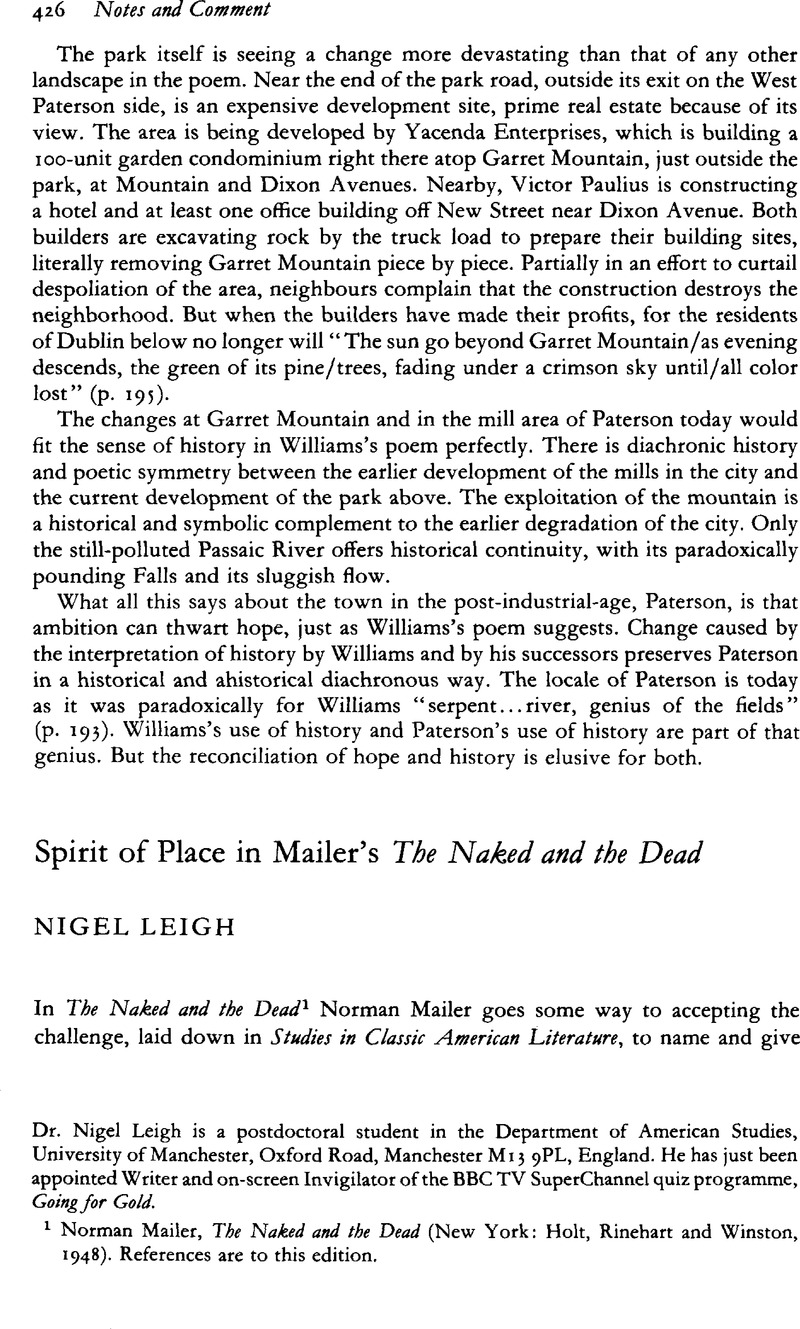No CrossRef data available.
Published online by Cambridge University Press: 16 January 2009

1 Mailer, Norman, The Naked and the Dead (New York: Holt, Rinehart and Winston, 1948)Google Scholar. References are to this edition.
2 Lawrence, D. H., Studies in Classic American Literature (1924; rept. London: Heineman, 1964), 1–8.Google Scholar
3 Alfred, Kazin ed., Writers at Work: The Paris Review Interviews, third series (New York: Viking Press, 1967), 261.Google Scholar
4 With this he becomes Ahab as seen by Olson, Charles, attempting to “dominate external reality” (Robert, Creeley, ed., Selected Writings of Charles Olson, New York: New Directions, 1966, 62).Google Scholar
5 Poirier, Richard, “The Difficulties of Modernism”, in Edelstein, A., ed., Images and Ideas in American Culture (Hanover, New Hampshire: Brandeis University Press, 1979), 140.Google Scholar
6 Lawrence, 59.
7 Olson, Charles, Call me Ishmael (New York: Reynal and Hitchcock, 1947), 12.Google Scholar
8 Poirier, , A World Elsewhere (New York: Oxford University Press, 1966), 237.Google Scholar
9 Olson, 11.
10 Yi-Fu Tuan's neologism which denotes the “affective bond between people and place or setting” (Topophilia: A Study of Environmental Perception, Attitudes and Values, Englewood Cliffs, New Jersey: Prentice-Hall, 1974, 4).Google Scholar